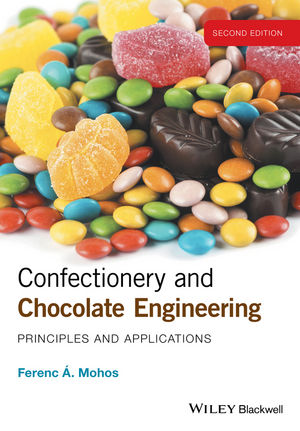![]()
Can it Get any Sweeter Than This?
by Martin Schultz
For sweet goods producers, both the latest and the oldest of the ingredients are attracting consumer attention at the same time, but maybe for different reasons.
On the one hand, sugar is again becoming a target as growing numbers of consumers are seeking out reduced-sugar foods. If it weren’t for the low-carb craze, sugar would be grabbing all of the headlines.
On the other hand, consumers haven’t stopped eating sugar. No way. In fact, when it comes to an indulgent end of the meal occasion, there’s often nothing more satisfying than a snack or dessert made with the real McCoy.
No doubt, carbs and sugar are intricately linked. Much of the attention over sugar and sugar substitutes is coming as the result of the onslaught of hype about the Atkins and South Beach diets. These diets have forced snack and bakery producers to figure out new ways to search for sweetness without adding carbs. At the same time, R&D gurus face the incredible additional challenges of developing good-tasting products that not only have fewer carbs, but also zero trans fat, low fat and low sodium.
Yet the debate over sugar, sugar replacers and how sweet a product tastes is in some ways just as confusing as the debate over low-carbs, net carbs and the glycemic index. Taste is subjective. What is too sweet for some consumers isn’t sweet enough for others. On the other hand, there is no generally agreed definition of low-carb at this time, although several industry groups have given the government their best thoughts. And how many consumers ever heard about the glycemic index, let alone understand what it is and how to incorporate it into their diets? It’s like trying to comprehend the theory of relativity.
Nevertheless, the debate over sugar in baked goods is becoming serious because it does have serious consequences on health.
“With the aging of the baby boomers,” says a report published in 2003 by Danisco. The report states that “55% of the American population is now over 45 years old, and they are becoming more health-conscious as they approach their senior years. Alarmingly, more than 64% of adults and 15% of children in this country are overweight or obese.”
Additionally, more than 17 million Americans have been diagnosed with Type 2 diabetes, which is associated with obesity and is growing at a rate of about 6% per year.
On the flip side of this somber situation, the whole issue over health and wellness presents baked goods and ingredient producers with many opportunities to deliver products that diabetics, for example, could add to their shopping baskets.
SPI Polyols, for instance, has been investigating this critical issue for several years. This Newcastle, Del.-based ingredient supplier has focused a lot of its R&D resources on developing products for the sugar free, diabetic market.
“We see a lot of potential in no sugar-added cookies, for example,” says Jerry Roland, SPI Polyol’s director of marketing, specialty products. “We’re also interested in pursuing more exotic formulations, such as a no-sugar-added cream cheesecake with a blueberry or strawberry topping.”
The technical challenges with such formulations involves developing a sugar replacement that still gives the same functionality as sugar in terms of texture, taste and shelf-life stability.
“In reality, there’s no need to completely remove all sugar from the formulation,” Roland says. “It’s a balancing act.”
For ingredient suppliers, finding a solution to this challenge can certainly pay off. Studies show that anywhere from 57% to 67% of consumers are eagerly looking to stock up on new low-carb products.
Of course, the ultimate consumer acceptance of a new product incorporating a sugar replacer is, not surprisingly, going to be based on taste. This is particularly apparent when the focus switches to sweet baked goods or indulgent products such as decadent frozen pies.
When it comes to deciding on, say, a chocolate cake, market research analysis after analysis confirm that while some consumers may be willing to make a small sacrifice in order to save on the carbs, they will not tolerate any decline in taste when it comes to rewarding themselves.
In terms of cost, sugar replacers don’t necessarily have to give bakers and snack producers an expensive headache, as was sometimes the case in the past. While the additional processing of the ingredient to remove excess carbs will increase the cost at wholesale, low-carb products are commanding premium pricing these days. For example, Hershey sells its regular Reese’s Pieces for $3.43, but its hotly promoted sugar-free line goes for as much as $8.46. Atkins and South Beach diets are not for the budget conscious.
“The costs involved in producing ‘more healthful’ ingredients are easily absorbed by bakers who can in turn ask for premium pricing for their products,” Roland contends. “The important thing is to deliver a product the consumer wants.”
Baked products incorporating the sucralose ingredient marketed as Splenda have benefited enormously from its recent spurt in popularity, which accelerated in part from its approval by the Atkins diet.
Splenda’s nutritional advantage comes from the fact that it is sugar-based, but processed to eliminate all calories and all but one carb. Thus, it has the taste and sweetness of sugar without the negative properties. It actually passes through the body without being broken down.
Economically, the value of having an Atkins endorsement can be seen in the staggering rise in Splenda’s market share, which surged almost 300% to 43 cents per dollar spent in the artificial sweetener market last year. This meteoric rise can be compared with Equal, which saw its market share drop from 40 cents per dollar spent in 2001 to 22 cents in 2003. Partly, this was because Equal is the brand name for aspartame, which consumers incorrectly assumed to carry a health risk and the Food & Drug Administration (FDA) declared to be harmless.
In fact, the FDA says that all artificial sweeteners are safe, including sucralose — Splenda — which has no reported side effects.
The various sweeteners commercially available offer a wide range of production, texture and flavor benefits at a range of price points. Cargill, for example, has produced two of its own brands of low-carb artificial sweeteners, including its Ascend and Oliggo-Fiber. Ascend, a trehalose sweetener, is made from cornstarch. Its attraction derives from its ability to stabilize proteins while also enhancing flavor. Oliggo-Fiber is an inulin ingredient. Used in a variety of low-carb formulations, inulin is touted for what researchers believe may be its enhanced calcium-absorption properties — a benefit strongly favored by women.
Hoping to capture the consumer who watches every incoming carb, Cargill has launched Eridex. A sweetener derived from erythritol, Eridex has virtually zero calories and a good digestive response.
Among the polyols, maltitol has become popular with bakeries precisely because it is not derived from sugar. Processed from cornstarch, maltitol can be used in any proportion with other sugarless ingredients to formulate sugar-free, no sugar-added products and reduced sugar baked products. As an aside, maltitol is also considered tooth-friendly. It does not promote the formation of caries.
From Danisco come several low-glycemic ingredients. Litesse polydextrose, and Lactitol are a couple of specialty carbohydrates that have low glycemic indexes developed specifically for producing low-glycemic foods and can be used in the production of, for example, muffins, cookies, breads and cakes.
Beside lowering the glycemic load, Litesse helps to reduce sugar and fat, increases fiber and improves mouthfeel. Lactitol is a reduced-calorie sweetener with a sugar-like sweetness and no aftertaste.
These sugar-free and reduced-calorie ingredients have a minimal impact on blood glucose levels and insulin demand. This makes them suitable as replacement ingredients for sugars, starches and maltodextrins. They also help to improve the finished baked good’s nutritional profile.
In concert with the search for alternatives to saturated fats and trans fatty acids, carbohydrates and sodium, sugars are now high on many consumers’ lists of products to consume in moderation.
But the choices of alternative sweeteners available to bakers could help them deliver products that consumers want, at a price that’s well worth the effort.






